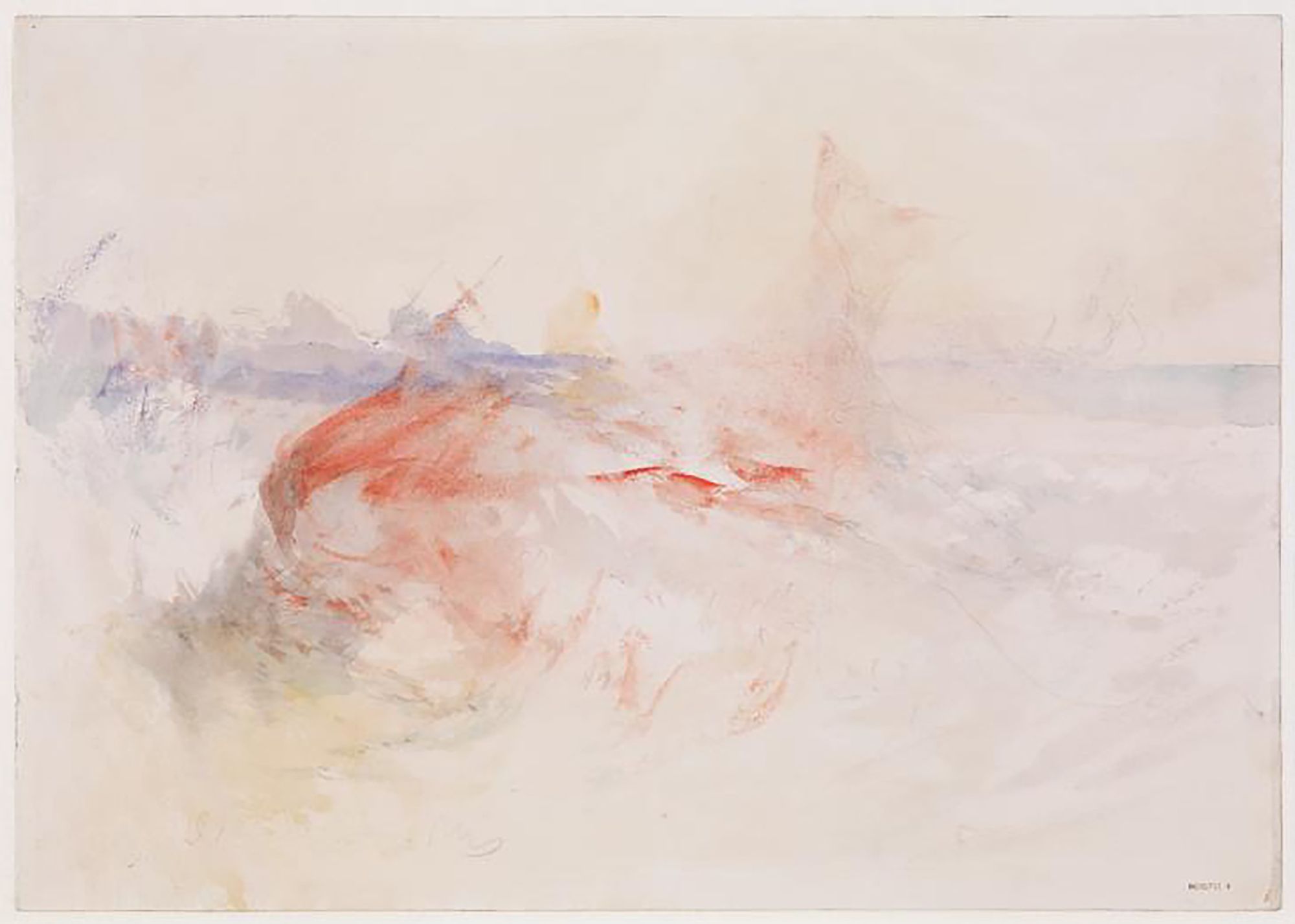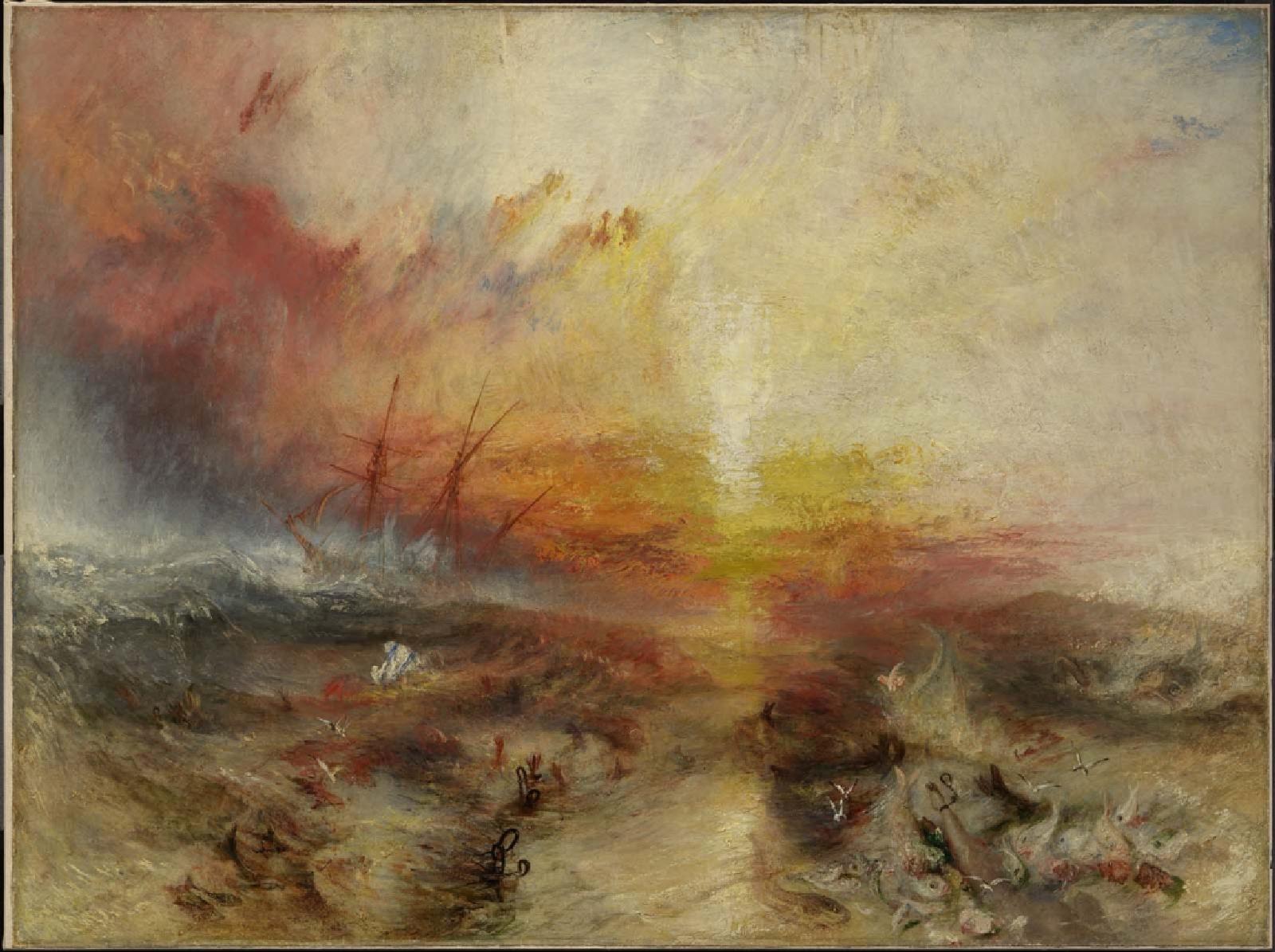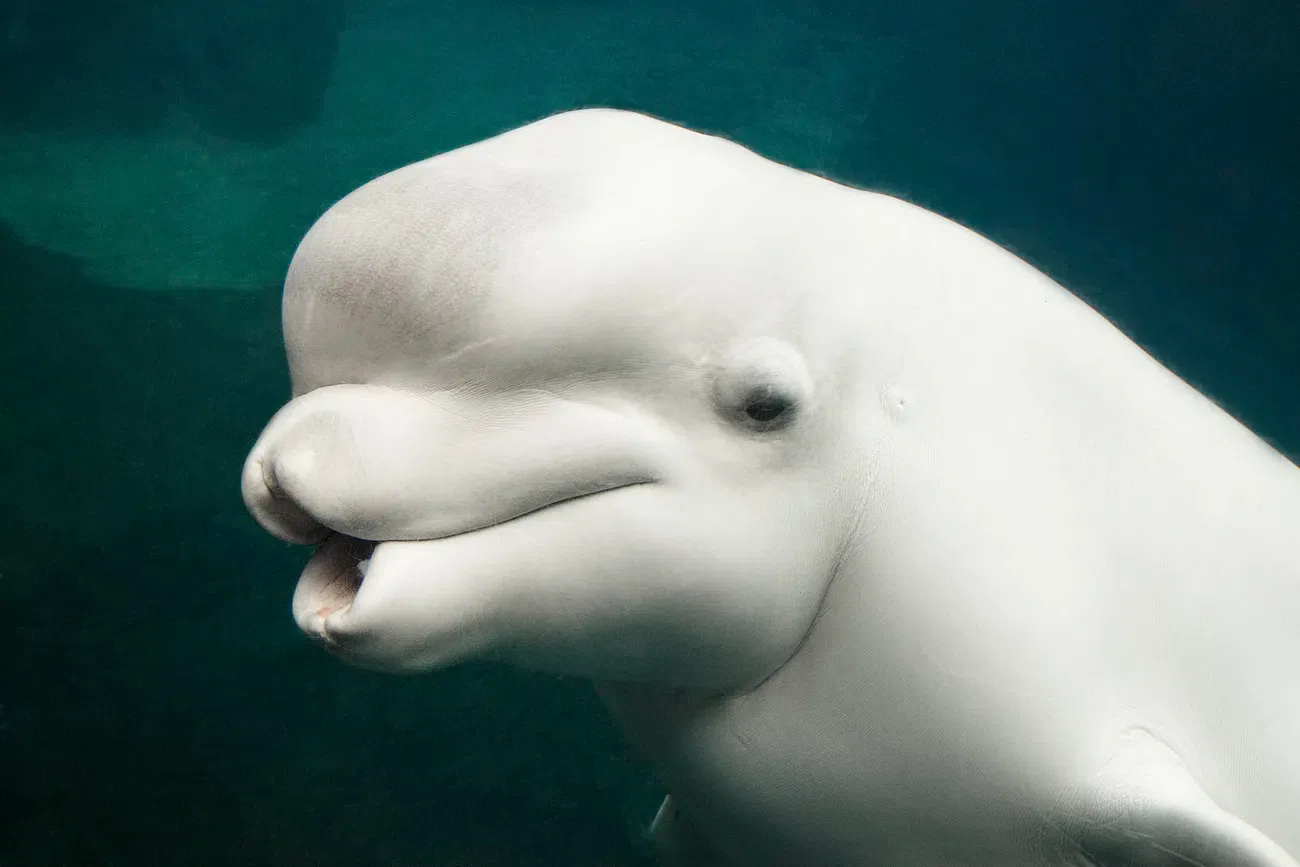Someone Is Looking Back

An Annotated Syllabus.
by Keely Shinners.
Kids have obsessions. For some, it’s dinosaurs. For others, horses. When I was a kid, I was obsessed with whales. I suspect this obsession originated with the film Free Willy, a movie I rented again and again from the video store. Although I could not articulate it at the time, I found this idea of communing with non-human beings—and, ultimately, liberating them from us—very intriguing. I vowed to become a marine biologist so that I could study the whales. As it happened, I became a writer instead. Still, whales have fascinated me throughout my life, and I have taken note whenever they come up in literature, film and art in interesting ways. This annotated syllabus is the result.
Whales: The Canon
Herman Melville, Moby Dick (1851)
Herman Melville’s novel—originally titled, simply, The Whale—is probably the most famous representation of cetaceans in the Western canon. It is not lost on me that the protagonist, Ahab, is a fellow sufferer of whale obsession. The reason for this obsession is clear. Whales know something that we do not know. Ahab suspects that, should he be able to capture this whale, he will come to know the unknowable. Unfortunately for him, that’s not how the unknowable works.
Still today, we have not learnt the lesson of Moby-Dick. We say the whale is meant to symbolize, by turns, God and the supernatural, power and its limits, evil incarnate, nature itself, destiny, desire, revenge. What is closer to the truth is that the sea is, as Jo reminds us in Letter of Recommendation: Old English [aw - ed] the whale-road—when we venture across it we are trespassing. When we threaten the whales of the whale-road, we do so at our peril, as evidenced in a recent uptick of orcas attacking yachts. They are fully within their right to do so!
Frank Stella, Monstrous Pictures of Whales from Moby Dick Deckle Edges (1993)
Moby-Dick has fostered its own sort of cult of obsessives; it’s become its own white whale. Endlessly reproduced and discussed, the novel has been adapted for film, theater, radio, comics and cartoons. The novel, which is itself highly referential, has produced endless derivatives. I’ll spare you the muck of them all, but I think these two are worth looking into.
Frank Stella’s series of mixed media works inspired by the book have this intangible, expressive, surprisingly vibrant quality that I love. Plus, he gets it: “It doesn’t have to make sense, except at the end, when it’s over.”
Wu Tsang, MOBY DICK; Or, The Whale (2022)
I haven’t seen this myself, but Wu Tsang’s multidisciplinary work seems to me to be doing a twenty first century adaptation of Moby-Dick in the best way, by synthesizing the derivatives surrounding it, probing its postcolonial implications, recontextualizing it in this spectacular, collaborative process featuring some of the intellectual heavyweights of our time. (I’m talking, of course, about Fred Moten.)
Hunting Whales
People have been hunting whales for thousands of years. Like, since neolithic times. And as much as I love whales, I get it. Think about how many people you could feed, or homes you could warm, with the meat and blubber of a 60-foot long leviathan! Where it gets sketchy is in the eighteenth and nineteenth centuries, when profit-driven commercial whaling really ramps up. This is the period of time in which many whale species were nearly hunted to extinction. They probably would have been were it not for the discovery of petroleum in the late nineteenth century.
The mainstream arc of this history usually goes: Whales were brutally hunted until the Save the Whales! movements of the twentieth century lobbied to outlaw the practice. While not untrue, this doesn’t capture the full story.
JMW Turner, A Harpooned Whale (1845)


It was an Instagram post by Alexis Pauline Gumbs that introduced to me the idea that commercial whaling and the transatlantic slave trade were intrinsically connected. Compare JMW Turner’s painting of a harpooned whale with his painting of a slave ship, for instance. Their eerie similarities suggest that these two industries—how they profited off blood and bodies—were part and parcel of the imperial project.
Chris Marker, Three Cheers for the Whale (1972)
Jessica Sarah Rinland, The Blind Labourer (2016)
Jessica Sarah Rinland, Philip Hoare, Edward Sugden, We Account the Whale Immortal (2016)
Chris Marker’s and Jessica Sarah Rinland’s documentaries explore further connections between commercial whaling, the imperial project, and the rise of industrial capitalism. As Marker’s voiceover poetically notes, “I love you, whales! You look like our planet, the earth, round and surrounded by birds. Surrounded by boats, too, of all nations. The entire world was there. The Dutch, the English from the Muscovy Company, Germans from Bremen. Each empire exacted from the whale people the corresponding portion of its power. It’s therefore normal that, at the end of the nineteenth century, the birth of the biggest modern empire was accompanied by the birth of a powerful whaling fleet.”
Christina Sharpe and Alexis Pauline Gumbs, On Water, Salt, Whales, and the Black Atlantics (2021)
In this epistolary exchange, Christina Sharpe and Gumbs make the case for mourning whales as an act of mourning those drowned by the “transatlantic theft complex.” As Sharpe writes: “Those who survived in the underbellies of boats, under each other under unbreathable circumstances are the undrowned, and their breathing is not separate from the drowning of their kin and fellow captives, their breathing is not separate from the breathing of the ocean, their breathing is not separate from the sharp exhale of hunted whales, their kindred also.”
Beached Whales
There is something truly uncanny about the sight of a beached whale. Partly because its huge, bloating, rotting flesh is totally abject. But the reason why beached whales attract crowds of curious onlookers and often doomed attempts to return them to the ocean is because a boundary has been breached. The whale does not belong here, in our terrestrial world. Moreover, we are attracted to the mystery: how could such a graceful, intelligent creature make such a fatal error?
Tacita Dean CBE, The Story of Minke the Whale (2001)
Tacita Dean’s notes on this photograph suggest that, although the whale was found beached in an estuary, the responsibility of her death is on that of the onlookers. “They killed her… poor Minke.” The way she is tied up to a pulley—an oddity, a prisoner—reinforces this idea. When whales beach themselves, are we, if indirectly, culpable?
Olga Tokarczuk, Everywhere and Nowhere (2008)
In this hybrid story-essay, Olga Tokarczuk wonders if the whales have, in some way, decided to die: “Why should the act of suicide be the dubious privilege of mankind?”
In an excerpt from Teju Cole’s novel, the narrator explains that, in the 17th century, the sight of a beached whale was a “powerful portent,” a bad omen, a “message from the deep.” Cole suggests a correlation between the fear of the beached whale and the repressed guilt of the colonial apparatus: “For the Dutch, who were attempting, at the time, not only to define their new republic but also to consolidate their hold on New Amsterdam and other foreign possessions, the spiritual meaning of the whale was ever-present.”
Patty Chang, Invocation for a Wandering Lake, Part I (2015)
When the artist Patty Chang encountered a beached whale on residency, she did what the Dutch failed to do; instead of exploiting it for its commodity potential, she took responsibility for it, deciding to wash its body as an act of mourning, “to atone for other, more destructive acts of the human race.”
Anne Pinto-Rodrigues, Whales in the Temple (2022)
In Vietnam, the bodies of beached whales are led to shore and honored with a proper burial ceremony. Afterwards, their bones are kept in shrines and temples where fishermen and their families go to pray to the whale-gods for safe travels at sea. This practice strikes me as an ethical way of dealing with the problem of a washed-up whale and, as this article points out, has preserved a wealth of information for scientists and historians alike.
Captive Whales
If this syllabus has not already made it abundantly clear, there is something about whales that fascinates us. Throughout the centuries, whales have been captured and put on display. This can be as innocuous as a whale’s skeleton being exhibited in natural history museums and as macabre as orcas and dolphins forced to perform entertainment in amusement parks. Even I, a staunch proponent of whale liberation, cannot deny that a sort of libidinal joy wells up in me when I see a video of a beluga serenaded by a mariachi band. But the fact of the matter is that, as much as we pretend that captive whales enjoy their captivity—that they have been “rescued,” that they have a special bond with their captors—captive whales are sick, depressed, angry and dying.
Béla Tarr, Werckmeister Harmonies (2000)
Béla Tarr’s film orbits around a stuffed whale that has been brought to a small Hungarian town under the auspices of a freakish circus. Because the whale is already dead, it is not a captive whale in the colloquial sense. But, to me, it typifies the moral experience of encountering a captive whale. It refuses to entertain. It horrifies. Looking into its lifeless, unseeing eye, the characters search in vain for a spectacle to distract them from their miserable lives and see, instead, themselves.
Lucy Skaer, Leviathan’s Edge (2009)
This artwork presents the skeleton of a whale that cannot be seen in its entirety; only parts can be ascertained through narrow slots in the walls. In this way, Lucy Skaer reflects not only on the act of looking, but the libidinal desire to look upon whales. For me, this raises questions about the ethics of exhibiting whale remains, a debate that has so far been relegated to the human sphere.
Sarah Archibald, Women Cuddling Animals (2014)
In this essay, Sarah Archibald adds to our libidinal desire to look upon whales our libidinal desire to look upon women who are intimate with whales and other animals, our simultaneous horror and pleasure when the relationship turns violent or otherwise goes awry. Writing about a trainer who was mutilated and killed by the orca Tilikum at a SeaWorld park in 2010, Archibald writes, “Dawn cannot be blamed for the tortuous circumstances of Tilikum’s capture, for his years of cramped confinement, for his isolation from his social group, for his bullying from other captive orcas. But perhaps she can be blamed for trusting a business that didn’t love the whales as much as she did. ‘When you look into their eyes, you know someone is home. Someone is looking back,’ says a SeaWorld trainer in Blackfish. Dawn knew someone was looking back, and she must have been forced sometimes to pretend she didn’t.”
Listening To Whales
I return to the thesis posited at the beginning of this syllabus. Whales know something that we do not know. The closest we are going to get to finding out what that is by listening to them. Indeed, they are speaking. They are singing! We just don’t, yet, have the tools to interpret them. While Alaina Clare Feldman saliently critiques “the ways humans have either anthropomorphized or Othered ‘wild’ nonhuman animals through domestic interactions and fetishization via recordings of their vocalizations,” artists and musicians have sought to mediate whale-noise in ways that closer resemble what Deleuze and Guattari might call “becoming-whale.”
Laurie Anderson, Pieces and Parts (2001).
Ellen Gallagher, Osedax (2010).
NTS, British Library Sound Archive, Underwater Recordings (2017).
Nocturne, Whale Song: A Workshop (2020).
mayfield brooks, Whale Fall (2021).
Zadie Xa, The Word for Water is Whale (2021).


Comments ()